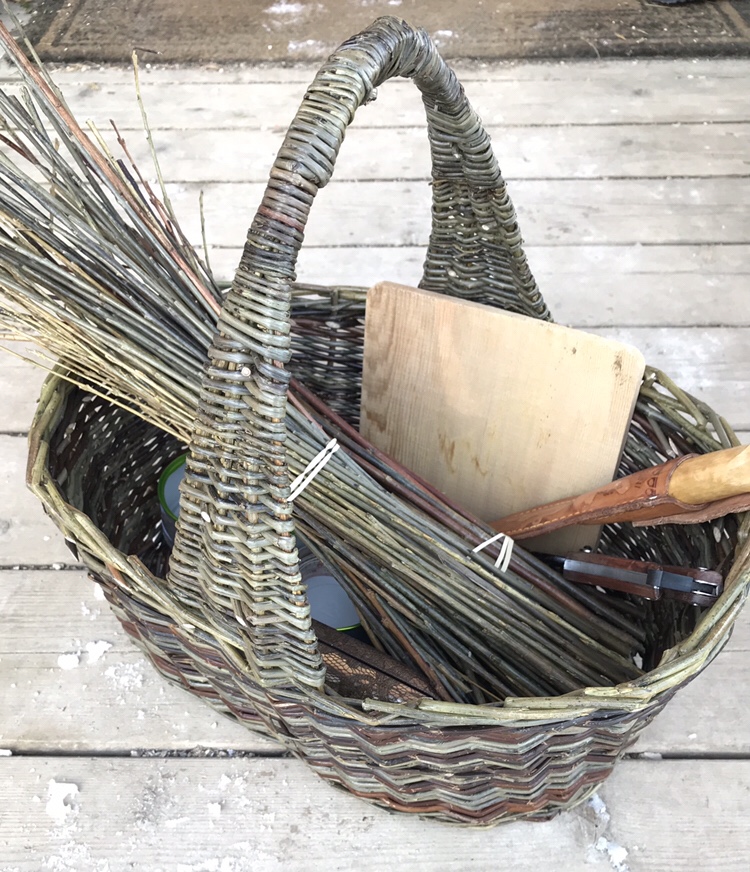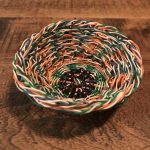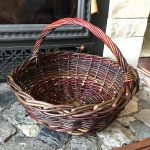Here is an adapted approach to using wire that does not spring or create tension like willow does. Photos to follow…
Wire Materials
- Gather your wire. I untwisted Ethernet (CAT 6) wire cut-offs for the green/white twisted wires, used CAT 5 for thinner weavers to start the base, and used 18-gauge white-coated wire from an old power cord.
- Colour your wire if needed. To match my son’s business logo I used a permanent Sharpie pen to colour the white wire.
Stakes
- Cut base stakes long so that they can become the side stakes later (to minimize sharp cut ends in the basket.
- Twist 2 wires together for the base stakes to provide firmness. This also means you will have double the side stakes ready to go when you weave the sides.
Chase-weave Base
- Untwist double wires slightly & feed the perpendicular bottom stakes through.
- Use your thinnest wire to begin base chase weave. I untwisted the white/green Ethernet wire to start by using the 2 strands separately.
- Chase weave as usual.
- Bend stakes up & untwist the double wires.
- Add a 3-rod wale.

After the base was woven, I removed the square start to reveal and interesting pattern.

Traditional start to round basket. Notice stake twisted wires were untwisted in the middle to slide the perpendicular stakes through.
French-randing Sides
- Decide how high up your sides will go. At that point on each side stake, twist a new wire around it downward, so that a long weaver now points down.
- Weave by French randing as usual. The wire rows spring up but are easy to keep pushing down to tighten the final weave once at the top of the sides.


Border
- At the top of the sides, add a 3-rod wale or don’t. Both works due to the sturdiness of the wire.
- If you choose a track border, finish the end on the inside of the basket so they don’t poke out on outside edge.
- If you choose a braided border, the end will finish hiding under the braided lip.
- In either case, use needle-nose pliers to tug the ends before cutting.

Border example

Braided border


 My motive to the size of these baskets was to make small pussy willow and spring flower arrangements in cat food tins.
My motive to the size of these baskets was to make small pussy willow and spring flower arrangements in cat food tins.




 I wanted to make a basket for our eggs and traditional Latvian pīragi buns (Granny buns as we call them!) at our family’s Easter gathering.
I wanted to make a basket for our eggs and traditional Latvian pīragi buns (Granny buns as we call them!) at our family’s Easter gathering. 


 Yippee! I’ve made it to the first quarter of the year- – Basket #13…
Yippee! I’ve made it to the first quarter of the year- – Basket #13…
















































